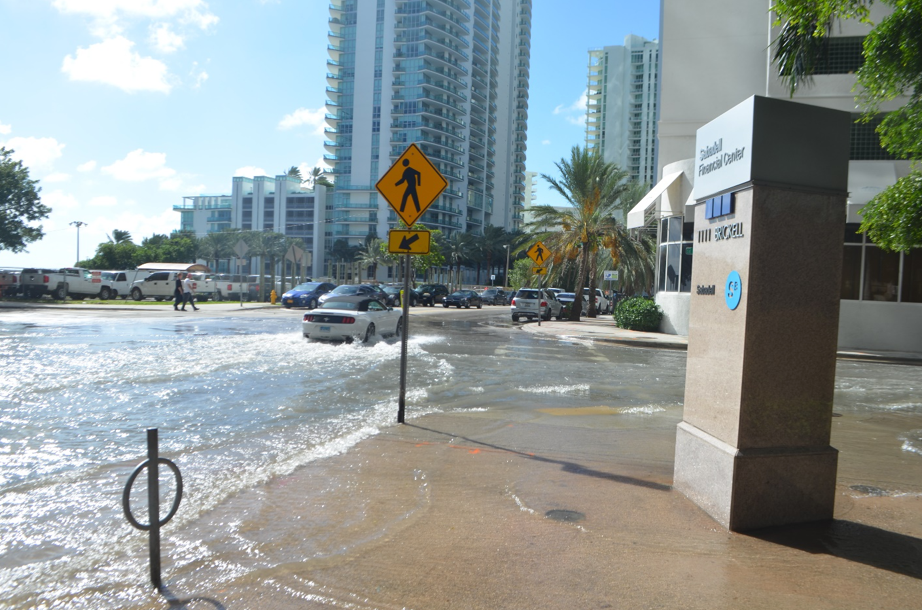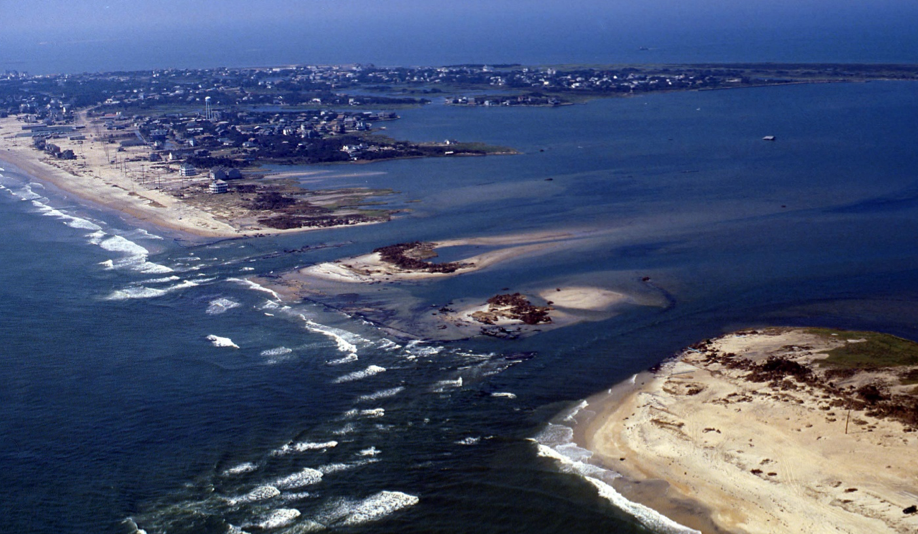Rising Sea Level Threatens Marine Industry

In North Carolina, the worries about climate change often focus on more frequent storms with heavier rainfall, but a new federal report points to an equally potent danger — the seeping effect of sea level rise.
The report released by the National Oceanic and Atmospheric Association (NOAA) as part of a multi-agency project shows that sea levels along U.S. coastlines will rise, on average, by as much as a foot over the next 30 years — equal to the rise measured over the last century.
Clarity to Forecast

Rick Luettich, a University of North Carolina marine science professor who heads the Center for Natural Hazards Resilience, said the projection for 2050 “isn’t radically different than it was 10 years ago,” but “there is a lot of clarity to these numbers now.”
That means sea level change isn’t a case of scientists speculating on what might happen given various scenarios. The change is here and accelerating.
“This new report says this is real now and it’s going to be significant much earlier than 2100,” said Luettich.
Coastal Flooding New Norm

The most noticeable effect will be more coastal flooding, even without storms. NOAA said in a summary of the report’s findings: “Sea level rise will create a profound shift in coastal flooding over the next 30 years by causing tide and storm surge heights to increase and reach further inland. By 2050, ‘moderate’ (typically damaging) flooding is expected to occur, on average, more than 10 times as often as it does today, and can be intensified by local factors.”
Flooding related to sea level rise will be more extensive in North Carolina because of its low coastal plain. As seawater seeps further inland, it will render land unusable for agriculture, impair fresh water sources and disrupt the effectiveness of septic systems.
“Saltwater intrusion is a major concern for the viability of coastal areas for agriculture and septic function is much less viable if the water table rises,” Luettich said. “That’s the hidden consequence.”
Marinas Impacted

Coastal marinas from Florida to North Carolina are on the frontline of rising sea levels and are a glimpse at future climate-change issues for the industry. Florida is reportedly spending as much as $100 million a year to harden coastal cities against sea level rise.
The City of Miami this week announced its spending $12 million to fix the popular Haulover Park and Marina. The money will go to replacing the docks with floating concrete docks, raising the parking lot by 3' (.91 m) and improved road drainage.
Private marinas are facing staggering costs having to raise seawalls and move infrastructure and buildings away from the coastline. That goal is to reduce the impact from storm surges and flooding from the naturally occurring King’s tide.
Window into the Future

Todd Miller, founder and executive director of the nonprofit North Carolina Coastal Federation, said the NOAA report offers a chilling view of the not-too-distant future.
“If this report is accurate, the current challenges we have with ongoing sea level rise along the coast will grow exponentially more difficult to handle,” Miller said. “This is not simply an issue of where the sea meets the land. A foot rise in sea level in 30 years means parts of our barrier islands will be severely eroded or disappear, Pamlico Sound and other barrier island protected sounds and estuaries will be transformed into unprotected bays, and estuarine shorelines and salt marshes along our mainland areas will erode dramatically and move inland.”
Sea level rise is a global problem with a global cause: rising emissions of greenhouse gasses. While little can be done about the next few decades, a drop in emissions could lessen the long-term swamping of the coasts. The NOAA report projects that under current conditions, sea level could rise by 2' (.61 m) by the end of this century. But if emissions are not checked, the increase could be as much as 7' (2.13 m).
Managed Retreat

Orrin Pilkey, a Duke expert on coastal geology and director emeritus of the Program for the Study of Developed Shorelines, has approached the threat of rising sea levels by calling for development to retreat from the beach and barrier islands. But that’s unlikely in North Carolina, given the large role of beach tourism and coastal real estate in the state’s economy. An alternative to retreating is stronger control over coastal development and more investment in infrastructure to limit flooding and protect freshwater supplies and wastewater systems.
Luettich said sea level change can be mitigated by lowering greenhouse gas emissions, but bringing that about involves an unknown that’s harder to predict. He said, “We understand the natural systems better than what people are going to do.”